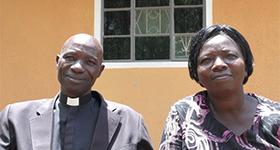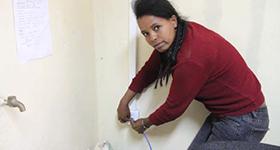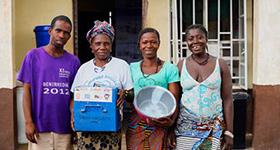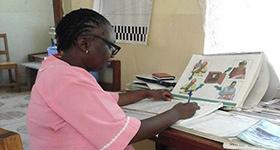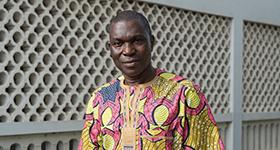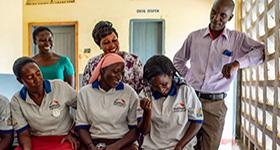Hawas Health Center in Adama Town, Ethiopia, is bustling with activity as health workers prepare for the morning staff meeting. Negash Ali, head of the health center, meets with all case team members to discuss their daily plans before the center opens. With approximately 200 patients attending the clinic each day, Hawas is one of the area’s busiest facilities.

Negash at work. Photo: APC/Ethiopia.
Negash was the deputy head and health management information system focal person before he was promoted to lead the facility. He has witnessed how access to information has transformed the way staff work and how patients benefit from these changes. Before 2018, the health center had no internet connection. Staff used a computer to enter health data, put the data on CD or USB drive, and transported it to the health office or sent it by email from a nearby internet café.
In 2018, Ethiopia’s Federal Ministry of Health (FMOH), as part of a larger effort to improve health services for all Ethiopians, began connecting the nation’s more than 3,000 health facilities and administrative health units to a virtual private network (VPN) known as Health Net. The effort was supported by the USAID-funded Advancing Partners & Communities (APC) project, which helped implement the FMOH’s Health Sector Transformation Plan Information Revolution agenda.
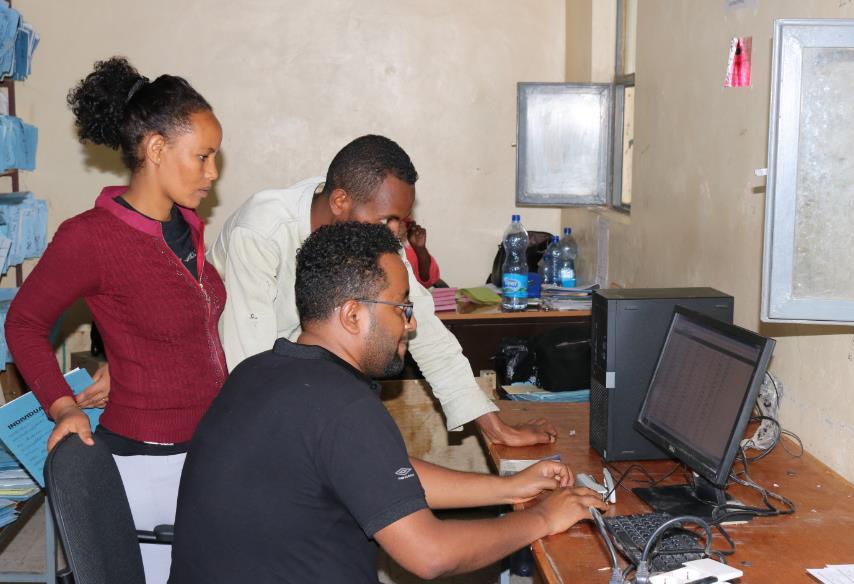
Negash and his colleagues access Health Net at Hawas Health Center. Photo: APC/Ethiopia.
Since 2014, the APC HMIS project has worked with Ethiopia’s Ministry of Health to improve the country’s health information systems—both paper-based and digital. Key data from paper-based systems are entered into DHIS2 and feed into analyses at all levels of the health system. APC has developed or deployed multiple health software platforms in addition to DHIS2, and Health Net connects them all. These systems include:
- A community health information system used by health extension workers to manage family/client data.
- The electronic multi-sectoral response information system used to collect non-clinical HIV data.
- Electronic integrated disease surveillance and response for early detection of epidemics.
- An electronic medical catalog system for patient registration and appointment management.
- The National Medical Service Directory and the Emergency and Referral Information System.
“This will reduce the amount of money we are spending for internet and keep us updated with the latest procedures and medication to provide for our patients.” —Negash Ali
Negash says that Health Net has shortened the time it takes to transfer data to the town’s health office. The health center receives feedback on the data submitted and many other aspects of work faster, too, allowing health center staff to solve problems more quickly, which benefits patients.
For example, instead of the cumbersome pre-2018 process of entering, transferring, and sending data, health center staff can upload service data and health events directly to the FMOH’s DHIS2 website, giving them more time to spend on patient care. Analysis and feedback is also managed within the DHIS2 platform, which gathers and processes routine health information from across the country, making nation-wide data available for health policy. And 14 hospitals in the Oromia region are currently providing teleradiology service (consulting to senior professionals at tertiary hospitals to interpret X-rays remotely) through Health Net.
When asked if Health Net has uses or effects beyond health data, Negash says, “Yes, as many of our health officers are trying to upgrade their education, they require internet for their study. The Health Net VPN provides a Wi-Fi connection in part of the facility, and patients and staff are using it to stay updated. This will reduce the amount of money we are spending for internet and keep us updated with the latest procedures and medication to provide for our patients.”

